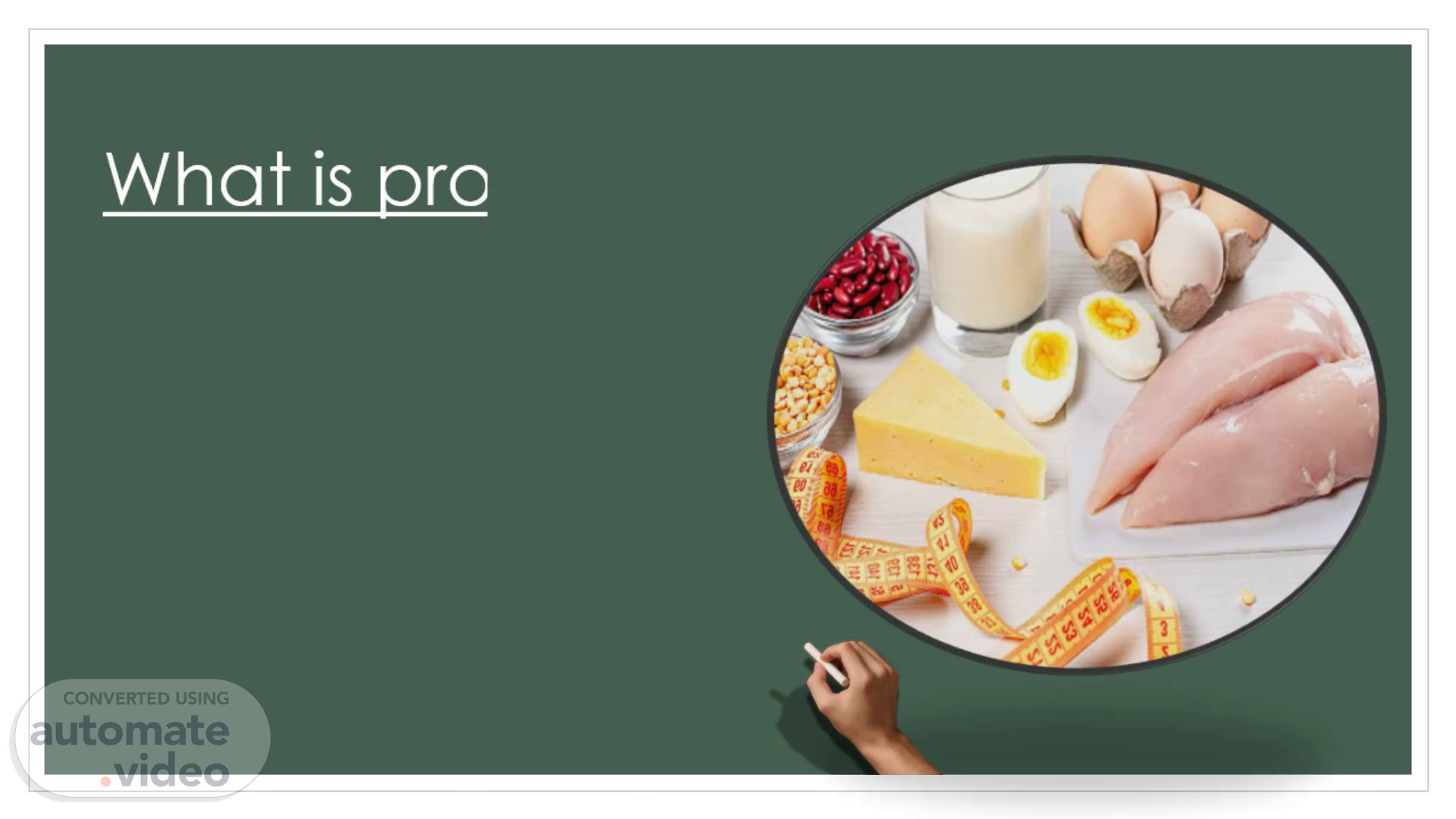
Chapter 2. Nutrients Digestion
Scene 1 (0s)
[image]. Our body needs protein ,to function properly and To build and repair cells. There are many different foods that contain protein, therefore it’s crucial that you get adequate of it each day..
Scene 2 (14s)
[image] 'carb6rv mclécules. [image] xygen. protein.
Scene 3 (25s)
They are referred to as nitrogenous compounds because they include nitrogen. There is no nitrogen in other organic materials. Proteins are broken down during digestion into intermediary products called peptones and albumoses, which then decompose into simpler compounds called amino acids. Amino acids can be taken in by the body and absorbed since they are soluble in water..
Scene 4 (51s)
The most valuable proteins are found in meat, milk and eggs. They contain all the amino acids required by the organism. These proteins are particularly needed by children. Proteins of vegetable origin contain only some of the amino acids necessary for the human organism. Most valuable of them are the proteins found in Beans , Potatoes and some other plants..
Scene 5 (1m 12s)
CARBOHYDRATES.
Scene 6 (1m 18s)
Carbohydrates or otherwise called as saccharides. Carbs are sugar molecules. Along with Proteins and Fats, Carbohydrates are one of three main nutrients found in food and drinks your body breaks down carbohydrates into glucose. Glucose or blood sugar is the main source of energy for your body’s cells, tissues, and organs ..
Scene 7 (1m 37s)
[image] €:carbon mclécules. [image] xygen. [image].
Scene 8 (1m 45s)
Carbohydrates are classified into three groups based on their complexity of their chemical structure.
Scene 9 (2m 1s)
In the process of digestion complex carbs are split into monosaccharides which are readily dissolve and are easily absorbed and assimilated by the organisms . A good deal carbohydrates is present in foods of vegetables origin [ bread , fruits , vegetables]..
Scene 10 (2m 17s)
FATS.
Scene 11 (2m 23s)
They are rich source of energy. They are a constituent of all tissues. They consist of the same elements as carbohydrates but in different proportions. The properties of the different fats depend on the fatty acids of which they are composed . Large amount of fatlike substances are present in nervous tissues , blood and bone marrow..
Scene 12 (2m 41s)
The three basic fatty acids. Oleic fatty acids Eg: Vegetable oil.
Scene 13 (2m 52s)
[image]. [image]. “Role of Fats in digestion”. During the process of digestion fats are split into Glycerin and Fatty acids , the latter entering into a chemical reaction with the alkalis present in the small intestine and forming soaps which readily dissolve and are easily absorbed. Large amounts of lipids are found in egg yolk , milk and roe..
Scene 14 (3m 11s)
VITAMINS,WATER & MINERAL SALTS.
Scene 15 (3m 17s)
They are special organic compounds in food. They are not sources of energy, but they affect metabolism and other processes in the organism. A varied diet will provide enough vitamins. Vitamin deficiency is accompanied by various disturbances. Water, mineral salts and vitamins are utilized by the organism in the state in which they are ingested with the food. Nutrients are usually ingested not in their pure state, but as constituents of mixed food. Most food stuffs (meat, bread, milk, etc.) contain all the nutrients, although in varying amounts..
Scene 16 (3m 44s)
They form part of all tissues of the organism ; however, they are not sources of energy. The amount of water in the adult human body may reach 70 per cent of its total weight. The organism receives water both in food and drink. Vegetables and fruit contain a particularly large amount of water, although all foodstuffs also contain a certain amount of water. In the process of digestion water is the solvent of all substances assimilated by the organism. Water is absorbed into the blood in the small and large intestines. The mineral salts present in the organism in the greatest amounts are those of calcium and phosphorus, while there are smaller amounts of the salts of chlorine, iron, iodine, sodium, potassium, etc. The daily requirement of most of these salts is small and amounts to grams for some of them (calcium), milligrams for others (iron), and even parts of a milligram for still others (the so-called trace elements, for example, cobalt). The normal variety of food usually gives the organism all the mineral salts it needs, except for common salt (NaCl) which has to be added to the food..
Scene 17 (4m 33s)
The entire process ensures that the nutrients from food are converted into forms the body can use for energy, growth, and repair.